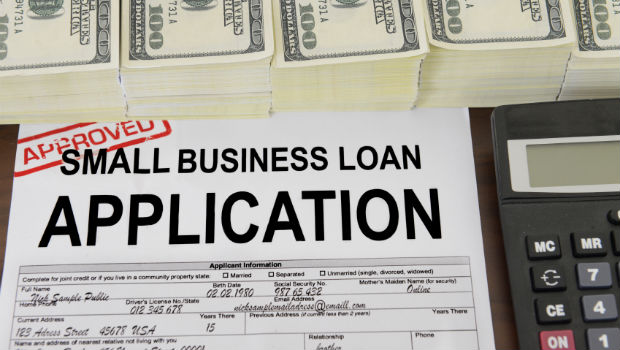
Don’t Break the Bank – Small Business Financing Made Easy
So you want to be an entrepreneur? Or are you looking to fund your existing small business? You’ve come to the right place. Let’s take a look at 5 options for small business financing made easy:
1. Personal Funding
The first and most obvious way to finance your business is to pay for it out of your own pocket. Undoubtedly, as you were planning to embark on this exciting new adventure, you’ve started putting some money aside, whether it be in your various bank accounts or under your mattress (hopefully the former), while waiting for the opportune moment. For many, this is how your business got started and you may have reached the end of your kitty and need some more options. Read on…
2. Friends & Family
Another relatively easy way to get your small business financed (depending on your relationship with your Aunt Harriet) is to ask the people close to you to invest. Family members and close friends are often happy to lend money to help a personal acquaintance in need, especially when you add in the excitement of launching a new company, with very little hassle or legal wrangling. Our very own CEO and founder, Janine Popick used this method to get VerticalResponse funded!
The downside that comes from mixing business with personal relationships, is it can cause a strain later, especially if results are less than stellar, so always keep it professional and honor the investments your friends and family make. Make sure they’re first on the list to get paid when you start to take money out of the business.
 3. Kickstarter
3. Kickstarter
If you’ve got a creative idea and don’t want to go the traditional small business financing route, check out Kickstarter. Kickstarter is a funding platform for creative projects that covers everything from films, games, and music to art, design, and technology. Kickstarter is full of ambitious, innovative, and imaginative projects that are brought to life through the direct support of others.
According to Kickstarter, since their launch on April 28, 2009, over $350 million has been pledged by more than 2.5 million people, funding more than 30,000 creative projects! That’s a lot of moolah for a small business!
Kickstarter says, “Each project is independently created and crafted by the person behind it. The filmmakers, musicians, artists, and designers you see on Kickstarter have complete control and responsibility over their projects. They spend weeks building their project pages, shooting their videos, and brainstorming what rewards to offer backers. When they’re ready, creators launch their project and share it with their community. Every project creator sets their project’s funding goal and deadline. If people like the project, they can pledge money to make it happen. If the project succeeds in reaching its funding goal, all backers’ credit cards are charged when time expires. If the project falls short, no one is charged. Funding on Kickstarter is all-or-nothing.” And, if your project gets funded, Kickstarter applies a 5% fee to the funds collected.
We recently posted about the crew at Back to the Roots, and they got funding for their latest project using Kickstarter. Definitely cool stuff.
4. Debt Financing
This is how the vast majority of small businesses get funded; simply by taking a loan at the bank. If your cash flow, credit history and business plan are up to par, banks will provide you with funds or a line of credit, along with a reimbursement schedule and interest rate. You can choose between 2 types of loans: secured, in which you’ll need to give up a deposit (in form of personal, commercial or residential property) in exchange for the funds; or unsecured, where no collateral is required, but the amount of capital will be smaller than for a secured one.
The advantages of this method are 1) interests are often tax deductible and 2) the bank won’t look to tell you how to run your company. On the other hand, having such a potentially high debt might discourage other investors to provide you with additional funds, so there’s a fine line to walk here.
5. Government Loans
Governments around the world are making a big push to help entrepreneurs start their ventures. The economy is still recovering, but start-ups and small businesses hold the key to providing it with the jolt it desperately needs by creating new jobs and generating revenue. In the US, the Small Business Administration (SBA) is in charge of raising capital from local lending partners to help kick-start nascent companies. To take advantage of these funds, entrepreneurs need to meet certain minimum criteria and provide financial details for both themselves and their start-up (loan request amount, collateral details, business and personal statements…) while facing an ever-growing competition from the other new business owners on the market. There’s plenty of cash to be loaned though, as in the past 10 years, the SBA has provided nearly 435,000 new businesses with over $94.6 billion total (source: Go4Funding).
Personal acquaintances, financial institutions and even online fund crowdsourcing can all be excellent paths for small business financing.
Have you taken advantage of any of these methods to finance your small business, or found others? Share away!
© 2013, Contributing Author. All rights reserved.




Mr James Caver
Hello Everyone,
Have you been looking for financing options for your new home purchase, construction, real estate loan, refinance, debt consolidation, personal or business purpose? Welcome to the future! Financing made easy with us. Contact us as we offer our financial service at a low and affordable interest rate of 3% for long and short loan term.Interested applicant should contact us for further loan acquisition procedures via :happinessloan120@gmail.com
Email: happinessloan120@gmail.com
Best Regards
Loan Offer: ameriquestmortgage now offering all type of loan with 3% interest rate. For enquiry, contact official address : ameriquestmortgagefinancialaid@gmail.com
Am making this testimony to the world because of what this great loan company called (Heaven Suite Loan Company) did for me i never believed in loan lenders until i came in contact with this loan lender called Pastor Osas Freeman my company was bank robed by some bad hackers left me with almost nothing and my investment was going down i was confuse not knowing what to do i try about 8 loan lenders and they all turn me down one day i saw a comment online about Heaven Suite Loan Company so i decided to give it a try and it happen to be that the loan lender is a man of God he answered to my call and i got the loan i was looking for and my company is on a stand again and it has been restored to his formal glory thanks to Pastor Osas Freeman
If you are in need of any kind of loan please contact
Email via: heavensuiteloancompany@gmail.com
You will never regret trying
Hello,
Do you need a loan? Do you want to pay up your bills? Do you want to expand your business? All you have to do is to get back to us for more
information on how to get started, and you will get ? Loan you desire. This offer is open to all, that this info below must be returned on time. Please note that the terms of our loan is 3% interest rate. You
must provide us the requested info below as it enables us to provide you with the credit terms you enter to inform the exact loan amount. if Interested in a loan from our company. you are requested
to fill the info provided below and get back to us for the proceed of your loan transaction.
Fill Out This Information Below:
Loan application form {online}
1) Name:—————————-
2) Country:————————–
3) Occupation:———————
4) Marital status:——————-
5) Valid Phone number:———-
6) Monthly income/Loan duration:—————
7) Address:———————————————
8) The purpose of the loan?:———————–
9) Loan amount required:—————————
10)Have you applied for a loan before?:——–
E-MAIL: patrickadamsfinance22@gmail.com
I want to thank Julia Navaro for the loan given to me by her loan company NAVARO LOAN COMPANY. Needed a loan to start a my boutique and didn’t know how to get a loan until I was introduce to NAVARO LOAN COMPANY by a friend online and she approved my loan of $300,000 with minimum income of $10 and now am a successful woman. If you need any type of loan from any country and of any amount at an interest rate of 2% contact Julia Navaro at
Navaroloancompany@yahoo.com and live a happy life.
Kickstarter is a great idea, you’ve then got an interested community awaiting the conclusion of your product too. Family/friends can always get a bit complicated, as personal relations tend to cloud judgement on financial matters!
I will have to check out Kick Stater, if nothing else it sounds like an interesting company. I would warn others to be quite sure your business is going to succeed, dot you I’s and cross your T’s, before taking out a secured loan. The last thing you want to have happen is loosing your house right after your business fails. You’d really want to do the same with a family member too, and be sure they’re awared of the risk.